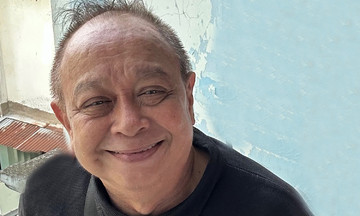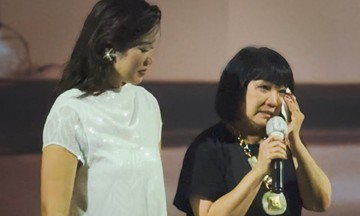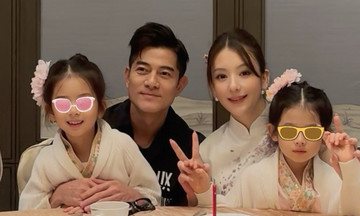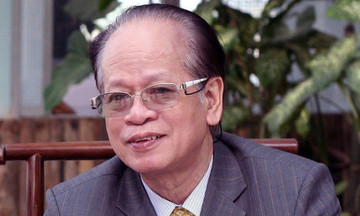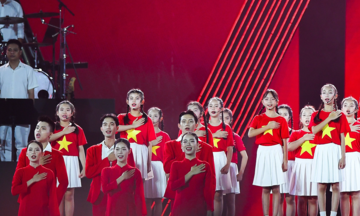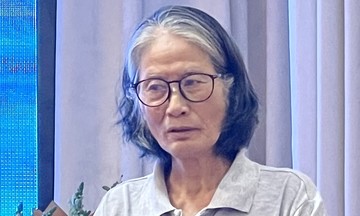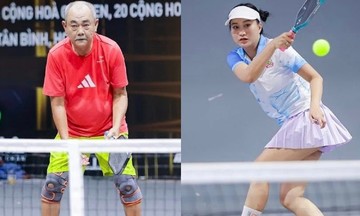Directed by Senior Lieutenant Colonel Dang Thai Huyen with People's Artist Ly Thai Dung as cinematographer, the war film "Red Rain" has broken domestic box office records, earning nearly 450 billion VND after 13 days in theaters. Dung shared his experiences filming and the emotions he felt while working on the project.
How did you become involved in "Red Rain"?
In late 2022 and early 2023, during a National Film Censorship Council meeting, director Dang Thai Huyen gave me the script. Huyen expressed her strong desire for me to participate, knowing my experience filming war movies. She also proposed this to the leadership of the People's Army Cinema, and everyone agreed that I should take on the role of cinematographer.
When I received the director's invitation, I thought anyone would be moved and readily agree. However, as a matter of principle, I asked to read the script first to see if I was suitable and capable. After reviewing it and connecting with the story, I decided to accept.
What impressed you about writer Chu Lai's script?
I belong to a generation still very close to the war. I was 8 years old when the battle at Quang Tri Citadel broke out in 1972. Before that, in 1968, the memory of evacuating at the age of 4 remains vivid. These experiences, combined with my passion for reading and learning about history, especially the history of resistance wars, have kept the memories of war very real for me.
When I received Chu Lai's script for "Red Rain," I felt a detailed perspective on the war. The content depicts the tragedy and intensity of war like a vivid documentary, exposing the nation's pain and the sacrifices of young people barely in their twenties. This is the largest-scale film of my career. It posed technical and creative challenges, but I couldn't refuse.
How did the crew prepare to recreate the historical setting?
We followed a rigorous process involving the director, assistant director, production manager, myself (cinematographer), and the art director. From receiving the script to going on location, we continuously discussed and analyzed each scene from our professional perspectives to agree on the representation, helping the director visualize the imagery clearly.
The team met repeatedly, then scouted filming locations, and returned to discuss further based on the actual locations until the film could be clearly "told orally." Due to the citadel's vastness, the crew built a scale model to visualize each scene. The main set was constructed on a 25-hectare site along the Thach Han River, about 5 km from the actual citadel, at a scale of approximately 1/2. This process began in 6/2023 and took almost a year to complete, including land clearance and bomb and mine removal.
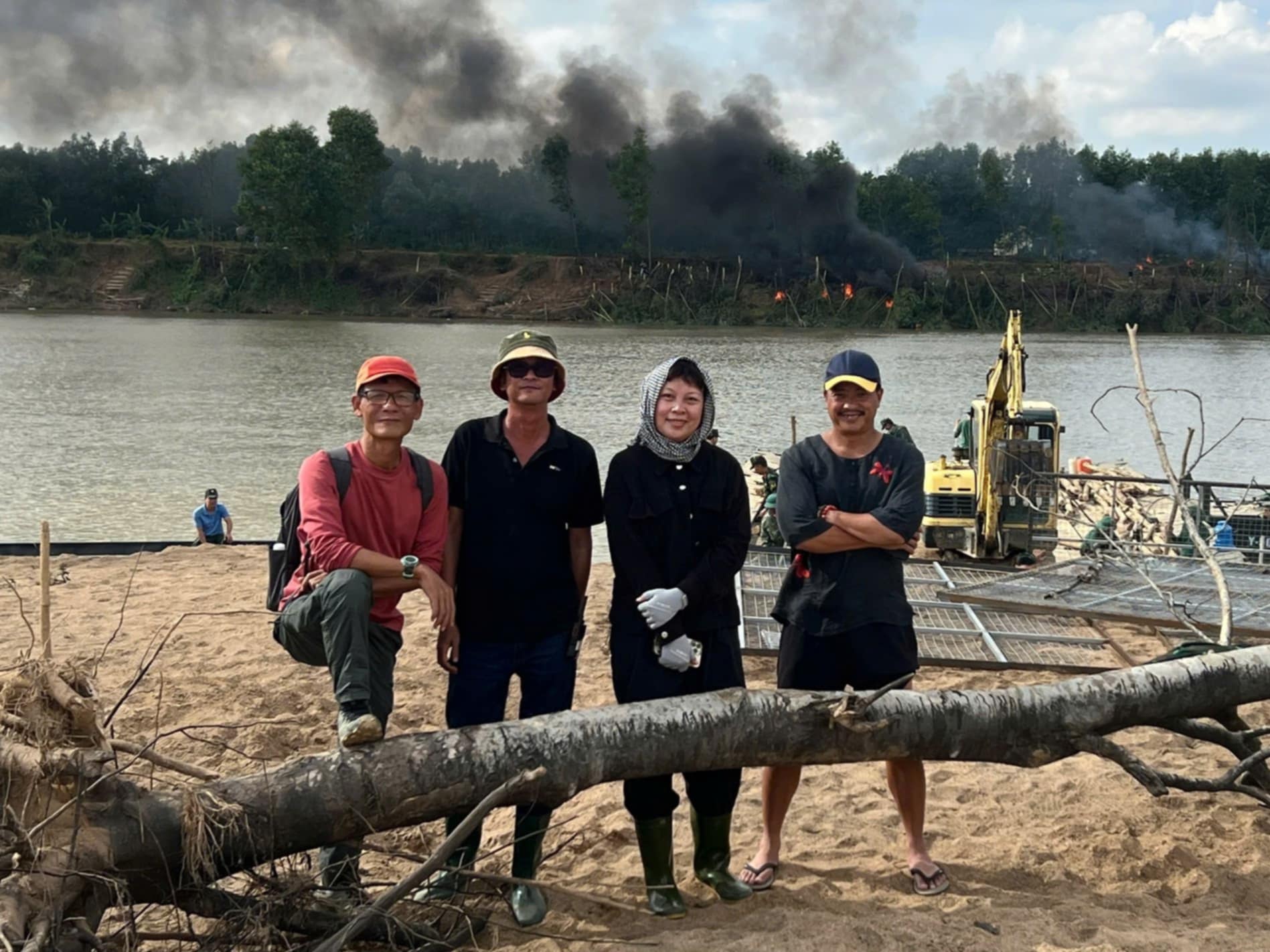 |
Cinematographer Ly Thai Dung (left) with director Dang Thai Huyen (second from right) on the set of "Red Rain". Photo: *Provided by the interviewee* |
What was the film crew's biggest challenge?
Filmmakers often say that filming on water is one of the most difficult challenges. In many countries, these scenes are usually staged in studios, even outdoor studios. But for "Red Rain," for technical reasons and the wishes of the People's Army Cinema and the people of Quang Tri, we chose to film on the banks of the Thach Han River, where the battle took place 53 years ago.
Filming on the river was already difficult, but the fact that the main segments took place at night presented another challenge. Not only did we have scenes of boating and crossing the river, but the crew also had to execute underwater explosions, explosions on the shore, and coordinate hundreds of actors and extras. The fast-flowing, wide, and deep river, combined with cold rain and temperatures of 13-15 degrees Celsius, made safety the top priority.
We received support from the 4th Military Region Engineers. They deployed self-propelled barges, buoys, and cables stretched from one bank to the other to create a safety corridor, anchor weapons, and mark explosion locations. Every actor entering the water had two accompanying special forces divers ready for rescue in any situation. We also built 200-meter-long wooden platforms along the riverbank to serve as docks for boats, allowing actors to hold on during filming.
Some large-scale scenes, such as the platoon crossing the river and the film's final scene, required significant manpower. After each "cut," our first task was to account for every person in the river to ensure no one was in danger. Only when the crew confirmed "all safe" could everyone breathe a sigh of relief. These were harsh experiences, but they brought many emotions and helped us understand the hardships of the soldiers from the past.
How did the film crew overcome the harsh conditions on set?
In my filmmaking career, I've never considered giving up. I see it as a responsibility, a job that I must do professionally and thoroughly. Our workload was intense. We worked at least 12 hours a day, often stretching to 14-16 hours in cold rain and mud.
For about 40-50% of the filming time, we started work at 5 PM and finished at 6 AM the next day. When the sun rose, the team was exhausted. Some went to sleep, while others tried to eat something before resting to regain energy. By the afternoon, everyone had to discuss and then return to the set to continue working. Out of 81 shooting days, 79 were overcast. The remaining two sunny days were used for rest, set preparation, and rescheduling. Every night, the logistics team prepared hot coals and porridge to keep the crew warm and nourished, helping everyone withstand the cold and regain strength.
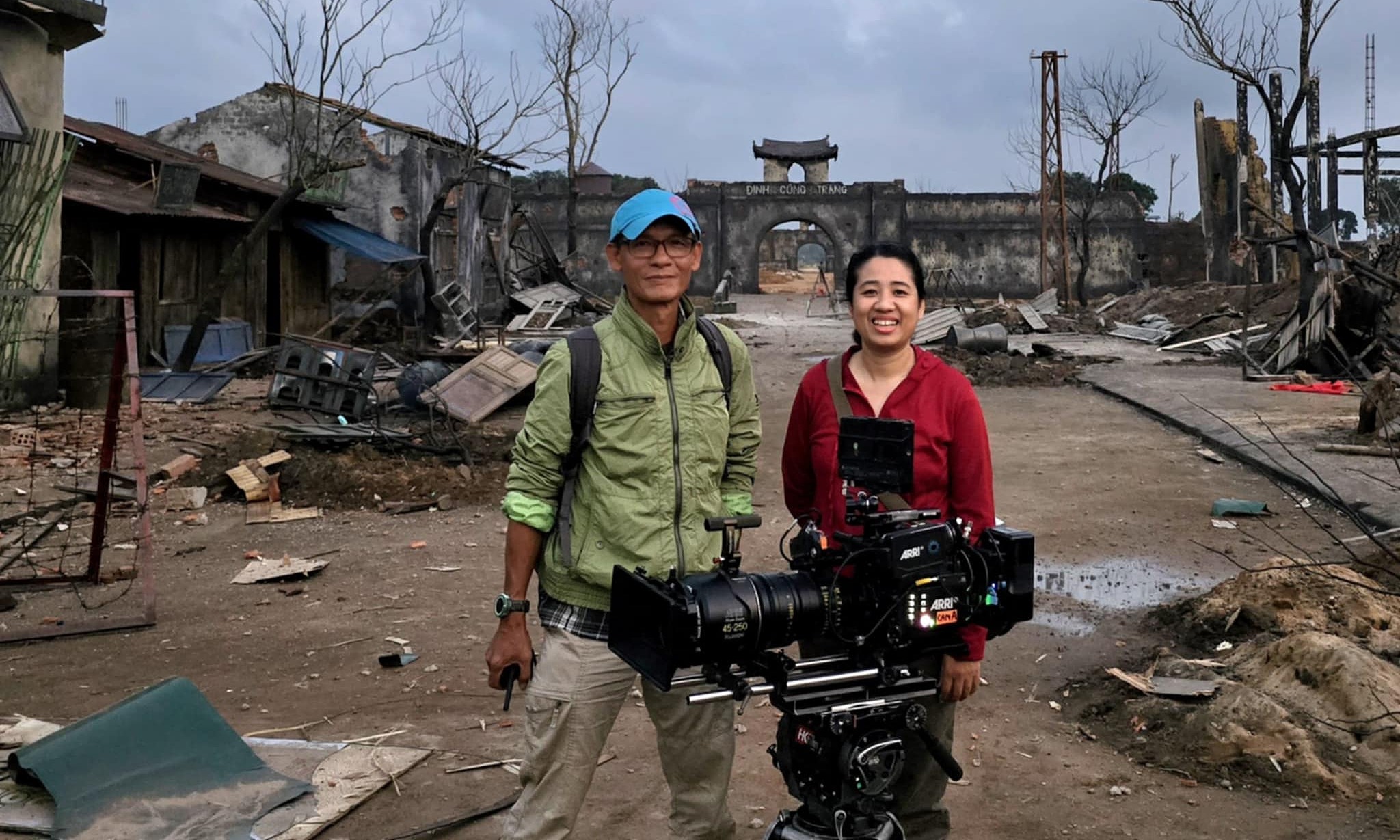 |
Cinematographer Ly Thai Dung (left) on the set of "Red Rain" in Quang Tri Province. Photo: *Provided by the interviewee* |
What message do you hope to convey to the audience through "Red Rain"?
I once read somewhere: "If you forget a war, you might repeat it in the future. But if you can't forget, you'll live in hatred forever." I think this project reminds us to remember and forget the war in the most humane way. When the country is at war, I believe every Vietnamese person will unite to protect the Fatherland. But in peacetime, the important thing is to live in a spirit of peace, closing the past of hatred to move towards national reconciliation.
Ly Thai Dung, 61, born in Hanoi, is the son of director Ly Thai Bao. He attended the first cinematography class at the Hanoi University of Theatre and Cinema, graduating in 1986. In his career spanning over three decades, he has won four Best Cinematography awards at the Vietnam Film Festival and three awards in the same category at the Golden Kite Awards, along with several international awards for "Adrift," "Father and Son," and "The Island of Aliens." In 2016, he was awarded the title of People's Artist. In addition to his creative work, he is the Vice Dean of the Faculty of Cinema Arts at the Hanoi University of Theatre and Cinema.
Interview by Que Chi.




